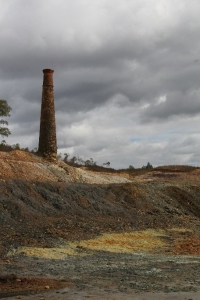This information will be available soon, so please come back later. Thank you for your interest.
Lecturer: Prof. Jorge Manuel Girão Medina and Prof. Beatriz Valle Aguado, Geosciences Department, University of Aveiro
Abstract:Around S. Pedro do Sul, during the morning, in the geology field trip it will be possible to see pre-Paleozoic metasediments of Slate and Greywacke Complex, the Ordovician quartzite in the S. Macário highest point with some of the most beautiful landscapes, and the variscan granite. This Technical Visit will be complemented by a tourist visit to one of typical villages in the region.
After lunch it will be possible visit the S. Pedro do Sul complex spa and hot spring. This visit will emphasize some aspects of the hydrogeology of the region, quality (main thermal water signatures: T = 69 °C; HCO3-Na, F, H2S), and quantity of the resource, highlighting the multi-uses that this thermal water already has (e.g. therapeutic use and greenhouse heating with production of tropical fruits, space heating of urban infrastructures, water heating for sanitary use), and others that are likely to be implemented ascribed to: leisure, tourism, floriculture, fruit production (other than bananas and pineapples – already in production).
Lecturer: Prof. Rui Castanhinha, Biology Department/CESAM University of Aveiro and GEAL-Lourinhã Museum, Portugal
Abstract:We will visit a beautiful landscape with multiple outcrops near the coast where some of the more famous Portuguese dinosaur fossils have been found. The Lourinhã formation is Kimmeridgian/Tithonian in age. It is currently regarded as equivalent to the Morrison Formation (USA) and presents also some species that are similar to the fossils found in the Tendaguru beds (Tanzania). Over the last years the Lourinhã Formation have been extensively prospected and excavated and several new discoveries have been made, namely: multiple new fossil nests with eggs and embryos, diverse archosaur footprints and tracks (dinosaurs and pterosaurs), and several new vertebrate species have been described. We will explore the paleoenviroments that can be inferred from the preserved fossil record and will have the opportunity to be near some of the sites where the most relevant vertebrate fossils from the Portuguese Upper Jurassic have been excavated over the last 150 years.
Maximum number of participants: 15.
Duration: one full day.
Transport, food and insurance are included
Lecturer: Maria João de Almeida Farinha Batista, LNEG, Portugal
Abstract:The São Domingos Mine was active between 1854 and 1966. Here a single volcanic hosted massive sulphide ore deposit was exploited in an open pit (120 m depth) and underground galleries (until 420 m depth). The São Domingos pyrite lens gossan was intensely exploited during Roman time. The main commodities extracted during the modern exploitation, were copper and sulphur. The São Domingos mining area includes from north to south two clean water dams (Tapadas), the mining village, the open pit and associated tunnels and shafts, the ruins of the railway facilities and power plant station, the Moitinha ore mills and the sulphur Achada do Gamo factories. The old railroad between São the Domingos mine and the Pomarão harbour, located approximately 17 km to the SE in the Guadiana River, was the main transport infrastructure. Along the valley of the São Domingos stream (downstream of the mine area) several acid water dams and a complex water channel system can be observed that were related with ore leaching process. This has resulted in large areas affected by acid mine drainage which can be observed today. The closure process of the São Domingos mine, undertaken in the 1960’s was extremely incomplete. The downstream area of the mine has for a long time been affected by AMD. Mining infrastructures and equipment built mostly of iron was dismantled and sold for scrap. The present mine landscape shows the effects of the old mine projects that did not contemplate any environmental protection.
Maximum number of participants: 15.
Duration: one full day.
Program:
07h00 Bus Pick-Up
13h00 Arrived to Mértola
13h30 Lunch
14h30 Visit to the Mines of São Domingos
17h00 Return to Aveiro
Transport, food and insurance are included




